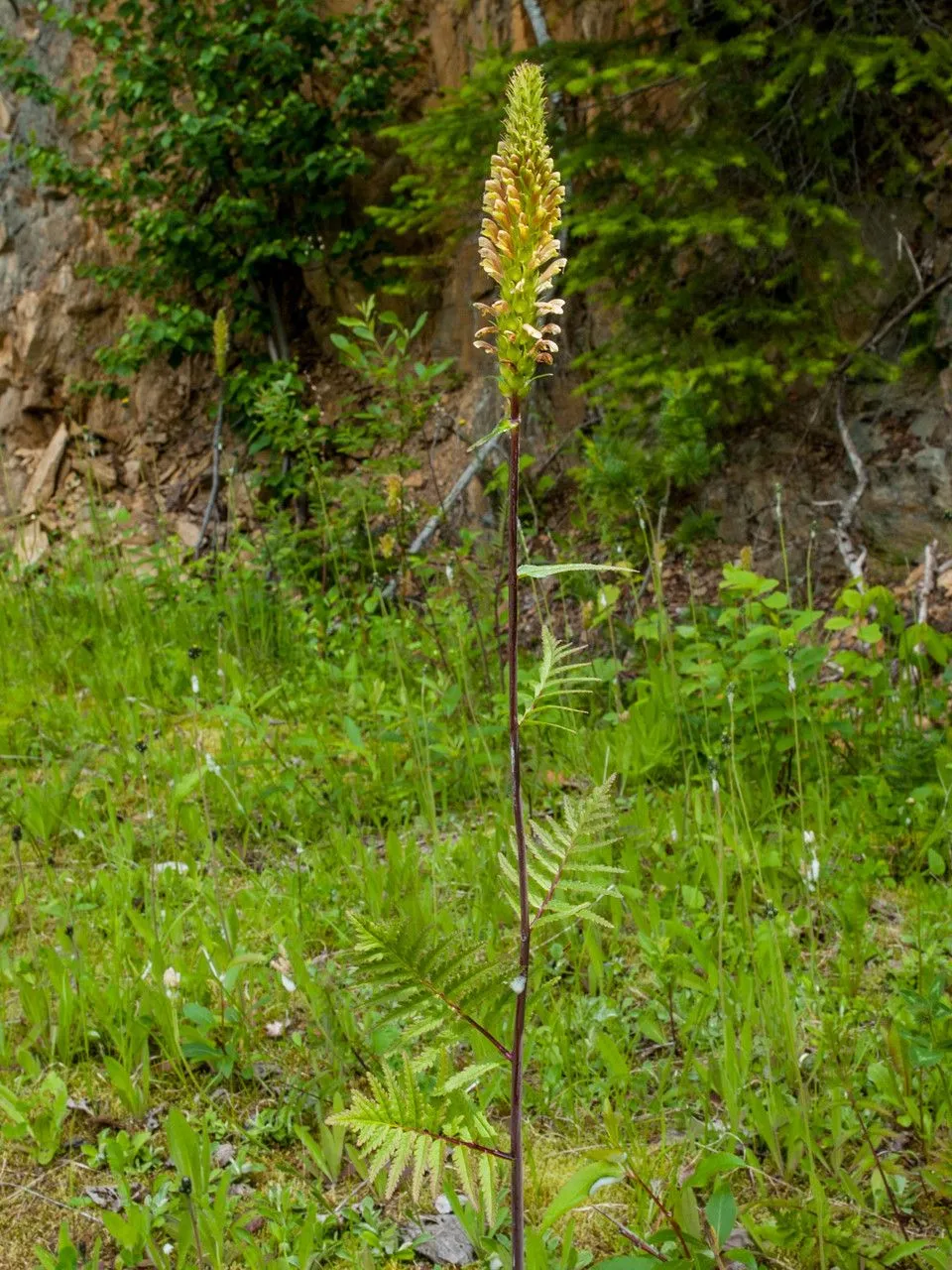
Author: Benth.
Bibliography: W.J.Hooker, Fl. Bor.-Amer. 2: 110 (1838)
Year: 1838
Status: accepted
Rank: species
Genus: Pedicularis
Vegetable: False
Observations: W. Canada to NW. U.S.A.
The Bracteate Lousewort, scientifically known as Pedicularis bracteosa, is a notable species belonging to the family Orobanchaceae. This fascinating plant was first described in 1838 in the publication “Flora Boreali-Americana” (Fl. Bor.-Amer.) by the renowned botanist W.J. Hooker, with its formal classification attributed to Benth.
Bracteate Lousewort thrives primarily in the native regions of Western Canada and the Northwestern United States. It is an integral part of the diverse flora found in these regions, often contributing significantly to the local ecosystems. This plant flourishes in various habitats, ranging from open meadows to forested areas, where it plays a crucial role in the biological community.
Characterized by its unique bracts, which are often colorful and distinct, Pedicularis bracteosa can be easily identified. The plant’s bracts are an essential feature, setting it apart from other species within the same genus. These bracts are not just ornamental; they have evolved to aid in the plant’s survival and reproductive processes.
In terms of morphology, Bracteate Lousewort exhibits a range of fascinating characteristics. The flowers are typically arranged in spikes, displaying hues that vary from pale to deep shades, depending on environmental conditions and specific locales within its range. The structure of these flowers is adapted to attract a variety of pollinators, which play a pivotal role in the plant’s propagation.
Pedicularis bracteosa’s presence in its native range underscores the diversity and adaptation of plant species in Western North America. Its existence supports various forms of wildlife, providing both nectar for pollinators and habitat for several organisms. The study and conservation of such plants are crucial, as they offer insights into ecological interactions and biodiversity.
The Bracteate Lousewort is, therefore, not merely a plant but a vital component of its ecosystem, reflecting the rich botanical heritage of the regions it inhabits. Continued observation and study of Pedicularis bracteosa contribute to our broader understanding of plant ecology and the dynamic nature of plant-environment interactions.
Eng: betony, bracteate lousewort, bracted lousewort, bracted pedicularis, canadian bracted lousewort, fernleaf, towering lousewort, western lousewort, wood betony
Fra: pédiculaire à fleurs bractéolées
En: Bracteate lousewort, Bracted lousewort, Bracted pedicularis, Betony, Canadian bracted lousewort, Fernleaf, Towering lousewort, Western lousewort, Wood betony
Fr: Pédiculaire à fleurs bractéolées
© copyright of the Board of Trustees of the Royal Botanic Gardens, Kew.
Taken Mar 9, 2013 by EOL − Gary A. Monroe (cc-by-nc)
Taken Feb 23, 2016 by EOL − Steven Thorsted (cc-by-nc)
Taken Jul 24, 2021 by Danielle Mccloy (cc-by-sa)
Taken Jun 18, 2006 by Andrew Gagg (cc-by-sa)
Taken Jun 18, 2006 by Andrew Gagg (cc-by-sa)
Taken Dec 16, 2015 by EOL − Marek (cc-by-nc)
Taken Aug 30, 2009 by EOL − Barry Breckling (cc-by-nc-sa)
Taken Feb 5, 2014 by EOL − meadowatch (cc-by-nc)
Taken Dec 23, 2014 by EOL − podiceps (cc-by-nc)
Taken Jun 18, 2006 by Andrew Gagg (cc-by-sa)
Taken Jul 18, 2017 by Tela Botanica − _ (cc-by-sa)
Taken Mar 12, 2022 by Alain Quevillon (cc-by-sa)
Taken Jul 24, 2021 by Danielle Mccloy (cc-by-sa)
Taken Aug 3, 2014 by EOL − Charlie Hohn (cc-by-nc)
Taken Oct 18, 2001 by EOL − John Game (cc-by-sa)
Taken Aug 23, 2006 by EOL − Steven Thorsted (cc-by-nc)
Growth habit>: Forb/herb
Family: Myrtaceae Author: (F.Muell.) K.D.Hill & L.A.S.Johnson Bibliography: Telopea 6: 402 (1995) Year: 1995 Status:…
Family: Rubiaceae Author: Pierre ex A.Froehner Bibliography: Notizbl. Bot. Gart. Berlin-Dahlem 1: 237 (1897) Year:…
Family: Sapindaceae Author: Koidz. Bibliography: J. Coll. Sci. Imp. Univ. Tokyo 32(1): 38 (1911) Year:…
Family: Asteraceae Author: A.Gray Bibliography: Pacif. Railr. Rep.: 107 (1857) Year: 1857 Status: accepted Rank:…
Family: Fabaceae Author: Medik. Bibliography: Vorles. Churpfälz. Phys.-Ökon. Ges. 2: 398 (1787) Year: 1787 Status:…
Family: Aspleniaceae Author: (Cav.) Alston Bibliography: Bull. Misc. Inform. Kew 1932: 309 (1932) Year: 1932…